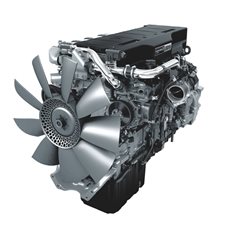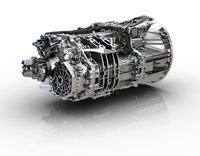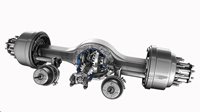
Driving the modern trucks of today is different than driving the trucks of the past. Early in my career, trucks had rear axle ratios of 4.11 and 3.73. For those of you who don’t know exactly what the rear axle ratio represents, here is a simple example: In the case of a 4.11 rear axle ratio; the number means that the drive shaft turns 4.11 times for 1 turn of the wheel.
Over time, as diesel engines began to develop their power at lower RPM’s and as speed limits went up, gear ratios became lower numerically, which makes for a taller gear. Keep in mind that when we were running a rear axle such as a 3.42, the overdrive ratio in the transmission was typically .73. This means that the output shaft in the transmission in overdrive is spinning faster than the input shaft, which is connected to the engine.
To figure out the overall gear ratio, you simply take the rear axle ratio and multiply it by the overdrive ratio. In this case, 3.42 x .73 is 2.496. This is nearly identical to a truck equipped with a 2.50 rear axle ratio and a direct drive transmission. There was a lot of confusion when direct drive transmissions first hit the marketplace. I would often have people telling me that a truck could not pull a grade with a 2.50 rear axle ratio and a direct drive transmission. Yet, these same people were satisfied with a 3.42 rear axle ratio with a .73 overdrive transmission.
Today, direct drive transmissions have rear axle ratios as high as 2.16, which numerically is not nearly as big of a step as it seems, when compared to a truck of the past with the above-mentioned gear ratios. Now, it goes even further. In my case, I have a 2.61 rear axle ratio and an overdrive transmission with a .78 ratio, which equates to a 2.035 overall ratio.
With today’s engines producing their maximum torque at RPM’s as low as 900, these taller gear ratios are necessary to take full advantage of the efficiency offered in a modern Class 8 diesel engine, such as the Detroit DD15. By lowering the speed at which the engine operates, we can attain unprecedented fuel efficiency.
So, where’s the catch? The catch is that today’s engines with these super-fast gear ratios tend to lose responsiveness while in high gear. If there is one thing that an aggressively high-geared truck does not like, it is to change speed often. This requires a driver who is looking to extract maximum fuel mileage from today’s powertrains to look farther down the road to anticipate necessary lane changes and speed requirements.
This scenario is not much different than being on a bicycle and switching to a more efficient, higher gear that would enable a person to travel longer distances with less movement of the rider’s legs. But as anyone who has ever ridden a bicycle in a high gear knows, it is not wise to slow down or speed up aggressively while in a higher gear. If a rider chooses to do so, they will soon find their legs fatiguing quickly from the energy required to accelerate rapidly. But if the rider stays steady, they can cover much larger distances with less energy being expelled from their body.


